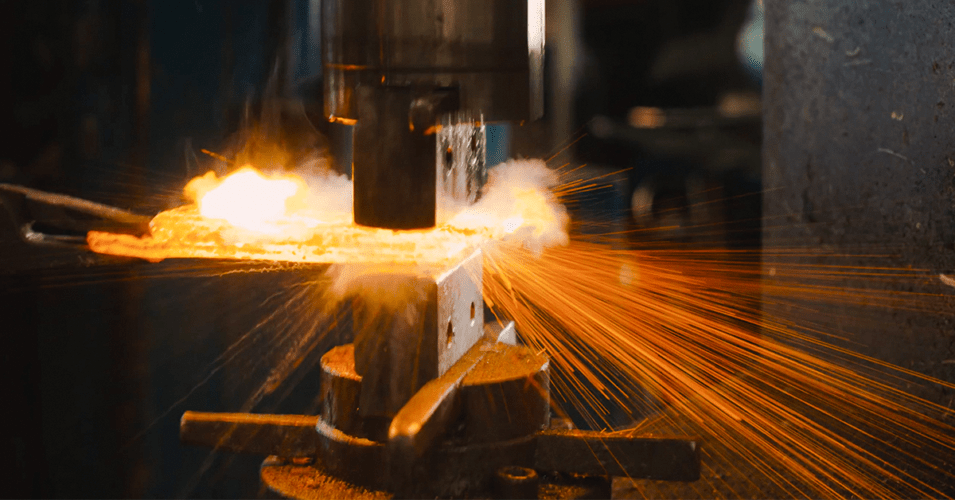In an era where environmental consciousness and sustainability have become paramount, industries of all kinds are reevaluating their practices to reduce their carbon footprint and minimize their impact on the planet. The hot forging industry, which plays a crucial role in manufacturing, is no exception. By embracing sustainable practices in hot forging, we can not only reduce our environmental impact but also enhance efficiency and profitability. In this blog, we’ll explore the significance of sustainable practices in hot forging and how they are forging a stronger future for the industry.
The Basics of Hot Forging
Before delving into sustainable practices, it’s important to understand what hot forging is and why it’s significant. Hot forging is a manufacturing process that involves heating a metal billet to a temperature where it becomes malleable and can be shaped into the desired form through compression and deformation. It’s a critical method used in the production of a wide range of components, from automotive parts and aerospace components to industrial machinery and tools.
Hot forging offers numerous advantages, such as improved material properties, higher strength, and greater precision. However, the high temperatures and energy requirements involved in the process can have significant environmental impacts if not managed sustainably.
The Importance of Sustainable Hot Forging
- Energy Efficiency: One of the primary concerns in hot forging is energy consumption. The industry relies heavily on heat treatment processes to reach the required temperatures for forging. By adopting energy-efficient technologies, such as induction heating or advanced heating systems, the industry can significantly reduce energy consumption and, consequently, greenhouse gas emissions.
- Material Efficiency: Sustainable hot forging also involves optimizing material use. This includes minimizing waste by using advanced cutting and forging techniques to get the most out of each metal billet. Reusing and recycling scrap materials can further reduce waste and conserve resources.
- Reducing Emissions: To forge a sustainable future, hot forging companies must invest in technologies that reduce emissions of harmful gases and particulates. Implementing effective filtration systems and modern emission controls can help minimize the industry’s environmental impact.
- Process Optimization: Sustainable hot forging isn’t just about the end product; it’s also about the processes leading up to it. Implementing lean manufacturing principles and adopting digital tools for process optimization can reduce resource consumption and improve overall efficiency.
Sustainable Practices in Action
Several hot forging companies and organizations are already making strides in embracing sustainable practices:
1. Improved Heating Methods
Many hot forging operations are transitioning from traditional gas-fired furnaces to more efficient and environmentally friendly induction heating. Induction heating is not only more energy-efficient but also allows for precise control over the heating process, reducing material waste.
2. Material Recycling
Forging companies are increasingly recognizing the value of recycling scrap materials. By collecting and recycling metal scrap generated during the forging process, these companies can reduce their reliance on virgin materials and decrease their carbon footprint.
3. Advanced Process Monitoring
The integration of sensors and data analytics in hot forging processes enables real-time monitoring and optimization. By collecting and analyzing data on temperature, pressure, and other critical parameters, companies can fine-tune their processes for efficiency and sustainability.
4. Collaboration and Research
Industry associations and research institutions are collaborating to develop sustainable forging technologies. They’re working on innovations such as eco-friendly lubricants, novel alloys with lower environmental impact, and advanced forging methods that reduce energy consumption.
The Road Ahead
Sustainable practices in hot forging are not only beneficial for the environment but also for the industry’s long-term viability. By embracing energy-efficient technologies, optimizing processes, and reducing waste, hot forging companies can forge a stronger future for themselves and contribute to a more sustainable world.
As consumers and industries alike become increasingly conscious of their environmental impact, the hot forging industry must continue to innovate and adapt. Sustainability is not just a trend; it’s a necessity. By forging ahead with sustainable practices, this industry can remain a vital part of the manufacturing landscape while minimizing its ecological footprint, ultimately contributing to a cleaner and greener future.
